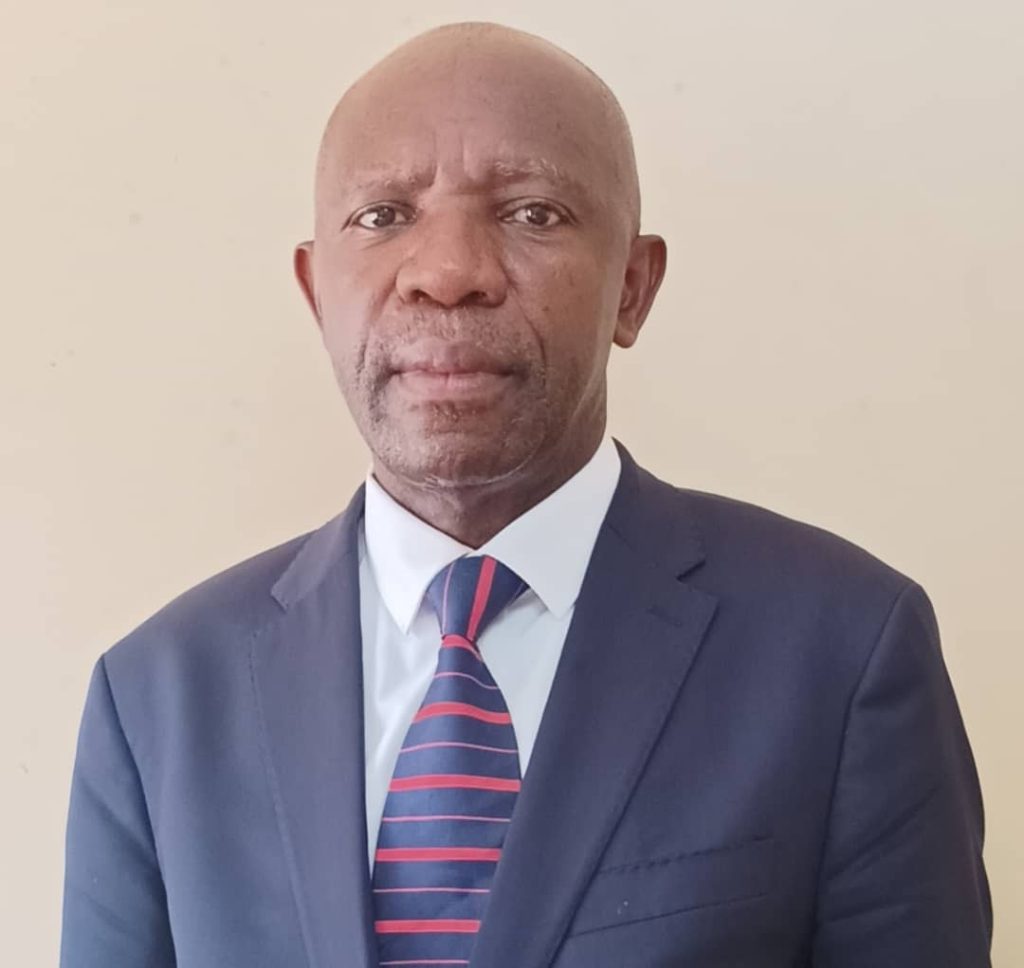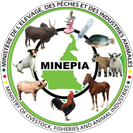Animal Production and Industry Development Program (Program 053)

Director of Development of Animal Production and Industries (DDPIA) responsible for program No. 053
2. PROGRAM STRATEGY
The livestock sub-sector is a powerful lever for ensuring food security, improving incomes, especially in rural areas, and consequently creating wealth and decent jobs. However, it faces several challenges that are likely to hinder its contribution to development. The main objective of the programme is to ensure an increase in the production of animal products.
In 2023, the Integrated Agropastoral and Fisheries Import-Substitution Plan (PIISAH) 2024-2026 was promulgated by the Head of State. The general objective of this plan is to contribute to the reduction of the trade deficit through the substitution of imported products by local production. It prioritizes the development of products from agropastoral and fishery activities that weigh on the trade balance, particularly with regard to program 053, milk, whose imports are estimated at 17,190 T in 2023. As a result, the implementation of the PIISAH is the priority of the activities that will be carried out during the next triennium.
In addition to milk production, the improvement of meat production in order to ensure the food self-sufficiency of the population but also the supply of the industrial sector remains one of the important objectives of the programme.
Thus, the strategy implemented by the Programme to meet the objectives set will consist of the livestock sectors, and mainly the dairy sector, in collaboration with its partners:
- Promote dairy farms by facilitating access to financing, modern production materials and equipment;
- To improve the performance of cattle (dairy and meat), pig, small ruminant and even poultry farms by facilitating access to high-performance genetic material through: (i) the continued establishment of animal semen production units in breeding stations which will play an essential role; (ii) the creation of insemination parks with the contribution of the DTCs; (iii) the training of trainers who are experts in artificial insemination and that of professional inseminators, with the help of training schools and structures with experience in the field, including SODEPA; (iv) the acquisition of cows with high dairy potential, breeding pigs and small ruminants with the assistance of projects and programmes (PDCVEP) and technical and financial partners;
- To improve the transport and marketing circuit and promote the development of the processing industry through the development (construction and equipment) of community infrastructures such as livestock markets, milk collection centres, mini-dairies, honey collection centres, slaughterhouses, modern butchers, delicatessens, with contributions from Projects and Programmes;
- Structure the actors and encourage the creation of inter-branch organisations for the livestock sector.
In addition, in view of the significant effects of climate change on the production system, in particular the disruption of agricultural production cycles, the drying up of water points, the degradation of pastures; It will also be a question of continuing to implement actions aimed at mitigating or even adapting to these effects. Thus, it will be a question of improving the feeding and watering of livestock through the promotion and intensification of fodder cultivation, the development of pastoral areas, the construction of water points, the modernization of infrastructure in rural areas operating on solar energy.
The implementation of these activities will be carried out with a strong involvement of women and young people, particularly in the processes of capacity building, financing of actors and support for productive assets. Thus, at least 20% of the beneficiaries of the actors' support will be women.
3. PROGRAM ACTION
The Government, in collaboration with its partners, is implementing a policy for the development of the sectors based on a better organization of the main actors at the level of each link (research, production, processing, marketing) with a view to increasing and securing the incomes of all stakeholders. In view of its potential contribution to the national economy, the Government plans to stimulate sustainable growth in this subsector by developing animal production and industries while preserving the natural resources related to them.
The objective of the programme is to increase the production of products and foodstuffs of animal origin. The indicator is the rate of increase in production in meat equivalent of products and foodstuffs of animal origin.
The implementation of this program is divided into 07 actions formulated as follows:
- Action 01: Improvement of the productivity and production of the beef sector (milk, meat);
- Action 02: Improvement of the productivity and production of the pig sector;
- Action 03: Improvement of the productivity and production of the poultry sector;
- Action 04: Improvement of the productivity and production of the small ruminant sector;
- Action 05: Improvement of the productivity and production of other livestock sectors (horse/donkey breeding, beekeeping, non-conventional and companion animal farming);
- Action 6: Development of agro-pastoral perimeters and food quality control;
- Action 07: Program management.
The implementation, monitoring and evaluation of this programme is carried out by several structures. The Programme is placed under the technical responsibility of the Directorate for the Development of Animal Production and Industries, and the Directorate for Pastures, Animal Feed and Livestock Infrastructure. For its operation, it follows a well-defined organizational chart. They are: (i) A programme manager (ii) action managers; (iii) a management controller; (iv) activity managers; (v) focal points.
As for its implementation, it involves, in addition to the decentralised services of MINEPIA, the sub-supervisory bodies (SODEPA), the attached bodies in particular the livestock development funds (CDEN and CDENO) and SOWEDA, breeding stations, mare farms, research structures, producer organisations, Decentralized Territorial Authorities (CTD), civil society and other administrations, etc.
In addition to these organizations, there is a strong involvement of projects and programs such as the ACEFA Program, the PD-CEPEP, PULLCA and PARPAC in achieving the strategic objective of this Program.
4. OBJECTIVES AND PERFORMANCE INDICATORS
PROGRAM MANAGER: Dr ONDOUA ZANG Jean Paul
MANAGEMENT CONTROLLER: MR. ONDOUA Martin Alexis
FOCAL POINT: Mrs. Rose Mary SEMNYONG
ACTION 1: IMPROVEMENT OF PRODUCTIVITY AND PRODUCTION IN THE BOVINE SECTOR (MILK-MEAT)
Objective: Increase the production of meat and milk (of quality)
Indicators:
- Quantity of beef produced (in tons)
- Quantity of milk produced and processed (in tons)
Responsible: Dr. AHMADOU Alim
ACTION 2: IMPROVEMENT OF PRODUCTIVITY AND PRODUCTION IN THE PIG SECTOR
Objective: Ensure the increase of pork meat production
Indicators: Quantity of pork produced (in tons)
Responsible: Dr. NGUEKENG Camille Laure
ACTION 3: IMPROVEMENT OF PRODUCTIVITY AND PRODUCTION IN THE POULTRY SECTOR
Objective: Increase poultry production (meat and eggs...)
Indicators:
- Quantity of poultry meat produced (in tons)
- Quantity of eggs produced (in tons)
Responsible: Mr. TAJO Désiré
ACTION 4: IMPROVEMENT OF PRODUCTIVITY AND PRODUCTION IN THE SMALL RUMINANTS SECTOR
Objective: Ensure the increase of high-quality small ruminant meat production
Indicators:
- Quantity of sheep meat produced (in tons)
- Quantity of goat meat produced (in tons)
Responsible: Dr. MEYOUFEY Bernadette Epse GOUTSAYA
ACTION 5: IMPROVEMENT OF PRODUCTIVITY AND PRODUCTION IN OTHER LIVESTOCK SECTORS (APICULTURE, NON-CONVENTIONAL FARMING, AND PETS)
Objective: Ensure the increase in the contribution of other sectors in animal product production
Indicators:
- Quantity of honey produced (in tons)
- Quantity of meat from non-conventional livestock (in tons)
Responsible: Mr. ABEGA OWONA Franck
ACTION 6: MANAGEMENT OF AGRO-PASTORAL ZONES AND QUALITY CONTROL OF FEED
Objective: Ensure the increase in both quantity and quality of animal feed production
Indicators:
- Quantity of compound feed stored and available
- Quantity of animal hay produced
Responsible: Dr. ABDOU MAHAMAT
ACTION 7: PROGRAM MANAGEMENT
Objective: Promote the overall performance of the program to achieve its goals
Indicators: Budgeted activity completion rate
Responsible: Dr. ONDOUA ZANG Jean Paul













